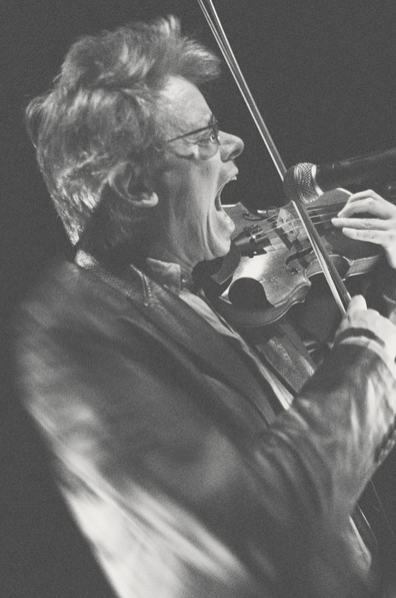The Arts Center at NYU Abu Dhabi
Black Box Theater / Abu Dhabi, United Arab EmiratesMore Info




Two Chinese Paintings (2015)
I. Wu Man / Ancient Echo
II. Traditional / Silk and Bamboo (inspired by Huanlege)
Wu Man
(b. 1963)
Composed and arranged for
50 For The Future:
The Kronos Learning
Repertoire
Realized by Danny Clay
(b. 1989)
“After two decades of collaborating with the Kronos Quartet, I am finally beginning to understand Western string instruments. With the group’s encouragement and support, I was able to create these—my first works for string quartet.
“Two Chinese Paintings is a two-movement suite which, taken with Glimpses of Muqam Chebiyat, resembles a set of portraits of traditional cultures from around China. In Chinese traditional music, instrumental pieces often have poetic titles to express their content and style. I decided to continue this tradition with this collection. The inspiration for these suites came from styles of traditional music in China familiar to me, including Uyghur Maqam of Xinjiang province, a pipa scale from the 9th century, and the Silk-and-Bamboo music, or teahouse music, from my hometown of Hangzhou.
“‘Ancient Echo,’ the first movement of Two Chinese Paintings, is based on a scale found among the oldest tunes for pipa. The second movement, ‘Silk and Bamboo’ is a variation on the tune ‘Joyful Song’ (Huanlege) from the collection of Silk-and-Bamboo.
“I feel quite grateful to be able to bring these old styles of traditional music into the repertoire of Western string ensembles. The left-hand portamento, or sliding, technique called for here is quite distinct from the types of expression found in Western music. I hope that audiences will come to better understand the richness and diversity of music from China through these stories.
“I’d like to thank Kronos for their trust and encouragement, for letting me be a part of their Fifty for the Future project, and for giving me this opportunity to share my musical experiences with young string quartets around the world!”
Wu Man demonstrates and discusses key techniques for Two Chinese Paintings. Participating quartets, Ligeti, Argus, and Friction Quartets, perform excerpts as part of the Kronos Quartet Workshop presented by the Weill Music Institute of Carnegie Hall.
Notes on "Ancient Echo" begin at 6:26
Notes on "Silk and Bamboo" begin at 7:40
Wu Man discusses her musical background, her relationship with Kronos, the piece she developed for 50 for the Future, and more.
Wu Man initially developed Two Chinese Paintings in traditional Chinese musical notation (the numbered system), as seen below in her score for “Silk and Bamboo.”
Learn more about Chinese musical notation here.

To develop Two Chinese Paintings, Wu Man first recorded the piece on her own instrument, the pipa. After recording the first layer, she then created three more layers, one on top of the other, resulting in the four-part pipa tracks here. The recording was then realized by Danny Clay. Hear Wu Man’s original pipa recordings here.

The experience of hearing Wu Man play the pipa is as wonderful and life-affirming now as it was when we first met her in 1992. She's so vibrant and virtuosic, and she absorbs and improvises music in a very natural, real way. It feels right to have music in this repertoire brought to us by Wu Man."

The experience of hearing Wu Man play the pipa is as wonderful and life-affirming now as it was when we first met her in 1992. She's so vibrant and virtuosic, and she absorbs and improvises music in a very natural, real way. It feels right to have music in this repertoire brought to us by Wu Man."

Recognized as the world’s premier pipa virtuoso and leading ambassador of Chinese music, Grammy Award–nominated musician Wu Man has carved out a career as a soloist, educator, and composer giving her lute-like instrument—which has a history of over 2,000 years in China—a new role in both traditional and contemporary music. Having been brought up in the Pudong School of pipa playing, one of the most prestigious classical styles of Imperial China, Wu Man is now recognized as an outstanding exponent of the traditional repertoire as well as a leading interpreter of contemporary pipa music by today’s most prominent composers. Wu Man’s efforts were recognized when she was named Musical America’s 2013 Instrumentalist of the Year, the first time this prestigious award has been bestowed on a player of a non-Western instrument.
Born in Hangzhou, China, Wu Man studied with Lin Shicheng, Kuang Yuzhong, Chen Zemin, and Liu Dehai at the Central Conservatory of Music in Beijing, where she became the first recipient of a master's degree in pipa. Accepted into the conservatory at age 13, Wu Man’s audition was covered by national newspapers and she was hailed as a child prodigy, becoming a nationally recognized role model for young pipa players. In 1985 she made her first visit to the United States as a member of the China Youth Arts Troupe. Wu Man moved to the U.S. in 1990 and currently resides with her husband and son in California.

More Info